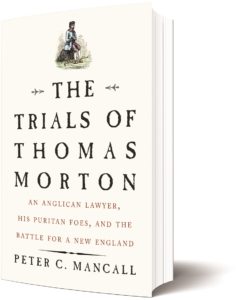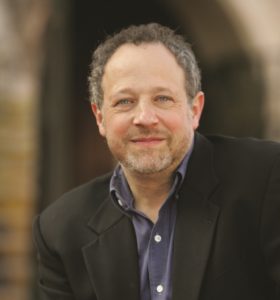In the book of Joshua, the ancient Israelites settle upon the land that God had promised them, a land called Canaan, and they do so without slaughtering any of the Canaanites who had been there long before them. It is conquest without violence. It is conquest as coexistence.
In the 1630s, Thomas Morton began writing The New Canaan. The book’s title parodied names such as “New England” and “New Plymouth,” which British colonists had given to the parts of America where they had settled. It was also meant to call out what Morton saw as biblical cherry-picking by Puritan settlers. The Puritans who had left England to set up a New Jerusalem were obsessed with the story of Canaan, seeing themselves in the role of the Israelites. They forgot, however, that the Israelites would have treated their Native American neighbors with respect and refrained from the massacres that the colonists, in short order, committed.
The New Canaan was Morton’s attempt to show how religious zeal had made the Puritans blind. They even prayed with their eyes closed, Morton pointed out: “They thinke themselves so perfect in the highe way to heaven, that they can find it blindfould. So doe not I.”

Morton’s belittling of the Puritans is the premise of The Trials of Thomas Morton: An Anglican Lawyer, His Puritan Foes, and the Battle for a New England, a book by University of Southern California professor Peter C. Mancall that was published last Thanksgiving, fittingly enough, by Yale University Press.
Mancall says that Morton understood “the power of the book to achieve political ends.” His narrative history of Morton’s struggle is written in easy and straightforward prose, rich in details but refraining from too much weighty analysis. It’s a slim volume, made up of a prologue that recounts epistolary exchanges between John Adams and Thomas Jefferson about Morton, and six cleverly divided chapters. The book’s color comes mostly from the quotes Mancall carefully culls from Morton’s book and other historical texts, revealing how 17th-century writers used biblical references in petty ways — to boast about themselves and snub their enemies.
This pettiness is in contrast to the quaint sanctity with which the story of the Puritans’ experience in the New World has largely been mythologized. In chronicling Morton, Mancall tells a story that is more human, which is to say less pretty and less neat.
Contemporary historians have tried to explode the creation myths of American colonies by focusing on the violence the early settlers inflicted upon Native Americans. Mancall, too, shows the devastation caused by the English, but he also unveils how ridiculous the whole venture was — how it wasn’t just the regional climate and conflict with the monarchy that threatened New England — it was the obnoxious and kooky personalities of some of its leaders.

The two main culprits that emerge in Mancall’s history are Morton and the colonial leader William Bradford — the namesake for the street in Provincetown and countless bars and inns. Morton and Bradford were two sides of the same coin: Morton, a fun-loving lawyer and fur trader who had respect and admiration for the Native American tribes he encountered, and Bradford, an austere control freak who viewed his colony’s indigenous inhabitants as a problem to be overcome. Bradford comes across in Mancall’s retelling less like a Christian disciple with deep convictions and more like a dog with a bone.
It’s easy to see why Morton posed a threat to the security and religious practice of Bradford and his followers. He sold guns to the Native Americans, and did it, Mancall points out, not out of solidarity but because he could churn out a good profit. Just as alarming to Bradford was Morton’s delight in debauchery. With the money he made, Morton purchased alcohol for himself and his companions “in great excess,” wrote Bradford, who further lamented that Morton and his band of miscreants erected an 80-foot maypole and would drink and dance under it, “frisking together like so many fairies.” Morton renamed his settlement Merrymount, “as if this jollity would have lasted forever,” complained Bradford.
Mancall concludes that Morton established the American “vein of countercultural thinking,” challenging Bradford’s quasi-authoritarian rule. This defense of Morton is both the book’s greatest strength and weakness. Mancall gives Morton too much credit for being a kind of transgressive, moral crusader. It’s hard to say exactly how “countercultural” or ethical any colonial project can be.
Despite Mancall’s extensive research with original sources, some questions raised at the beginning of the book go unanswered. What exactly does Morton’s idea of coexistence look like? Would it have occurred on the colonists’ or Natives’ terms? And why should Native Americans have had to negotiate with colonizers in the first place?
Mancall is right to believe that Morton’s life and work reveal much about the folly of the Puritans’ agenda, but the proper context won’t be found in the 17th-century Anglo writings that Mancall mines. It lies, instead, in the history of the Native people of this land, a history that long predates and ought to eclipse any of the petty shenanigans of William Bradford and Thomas Morton.



